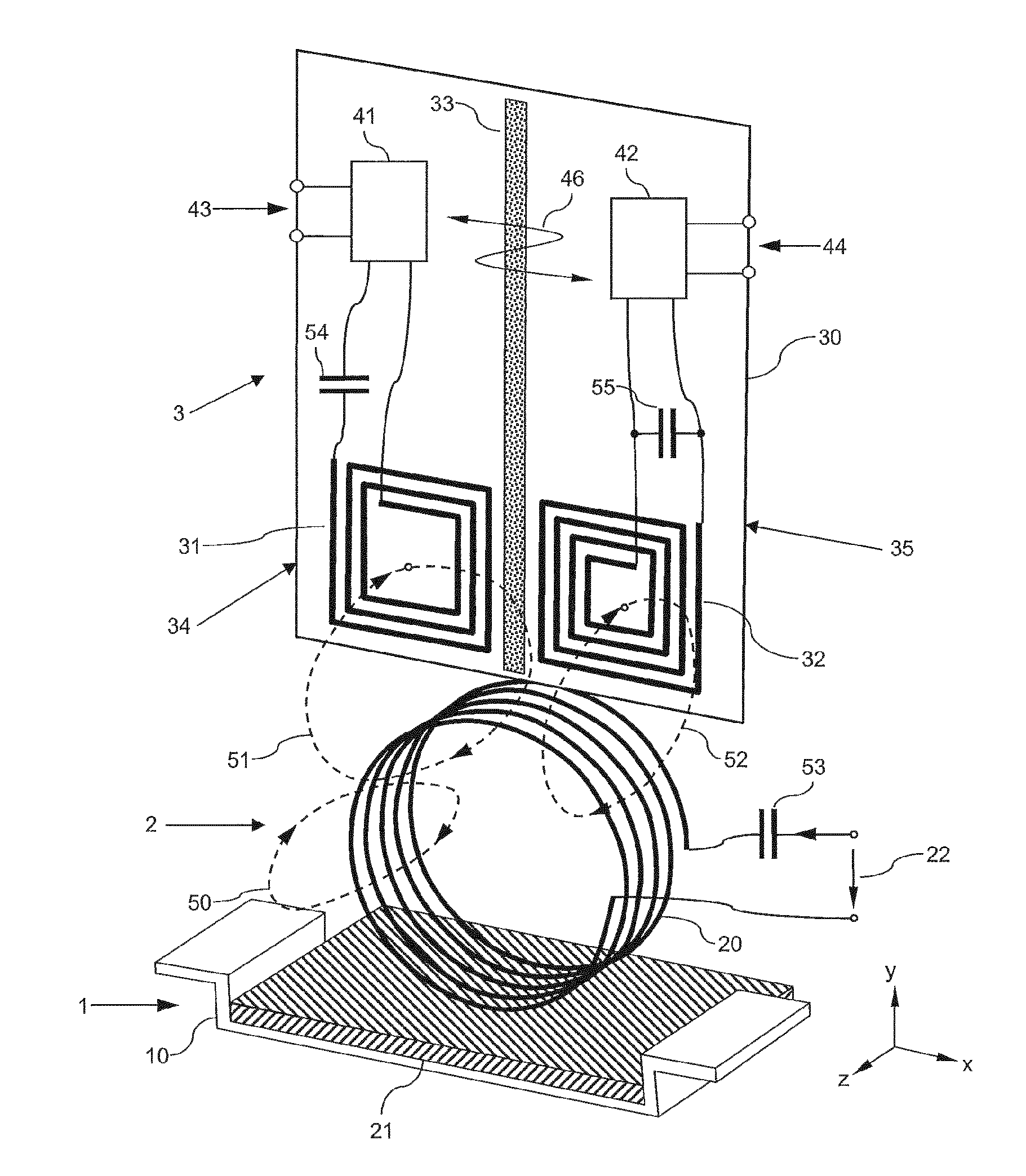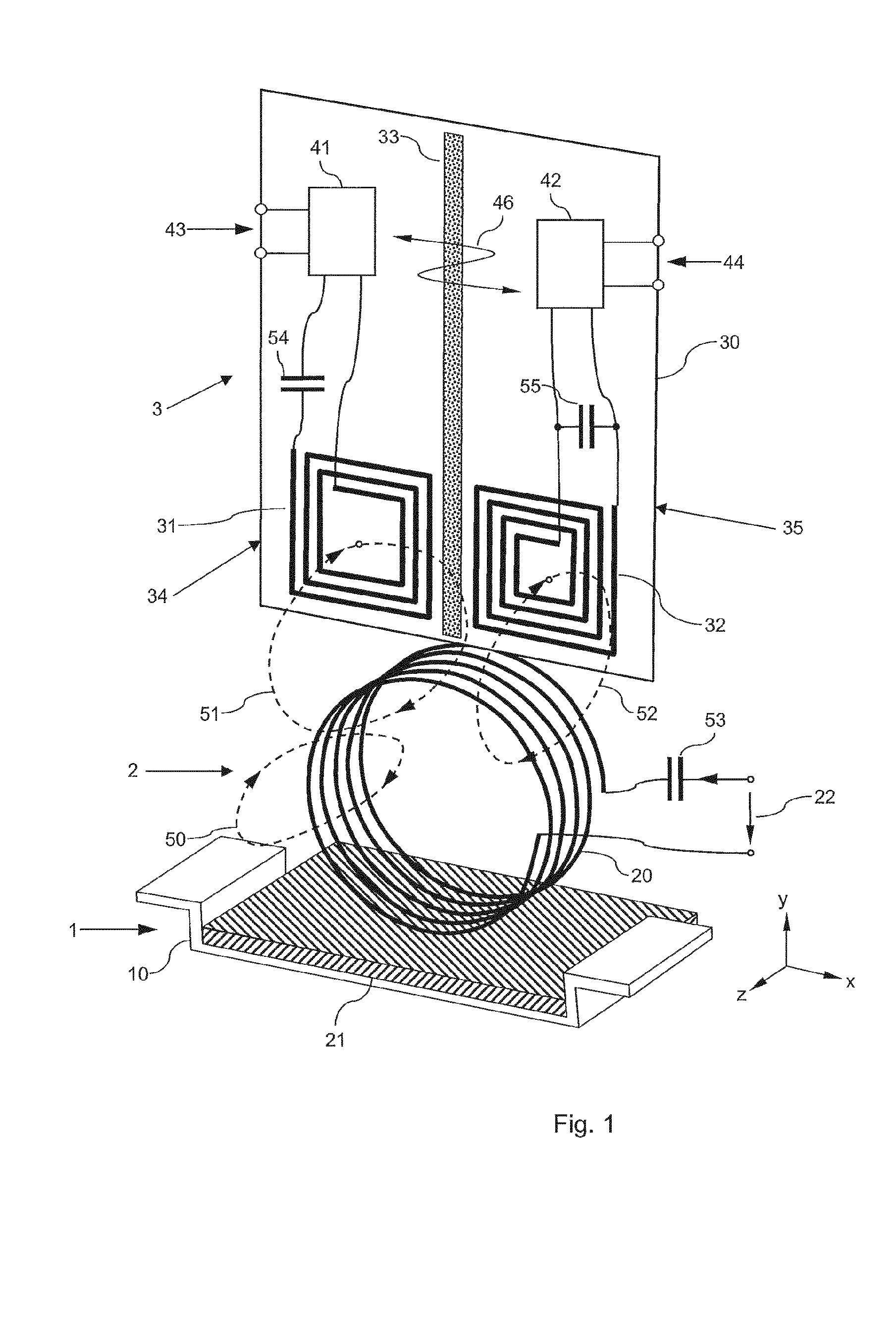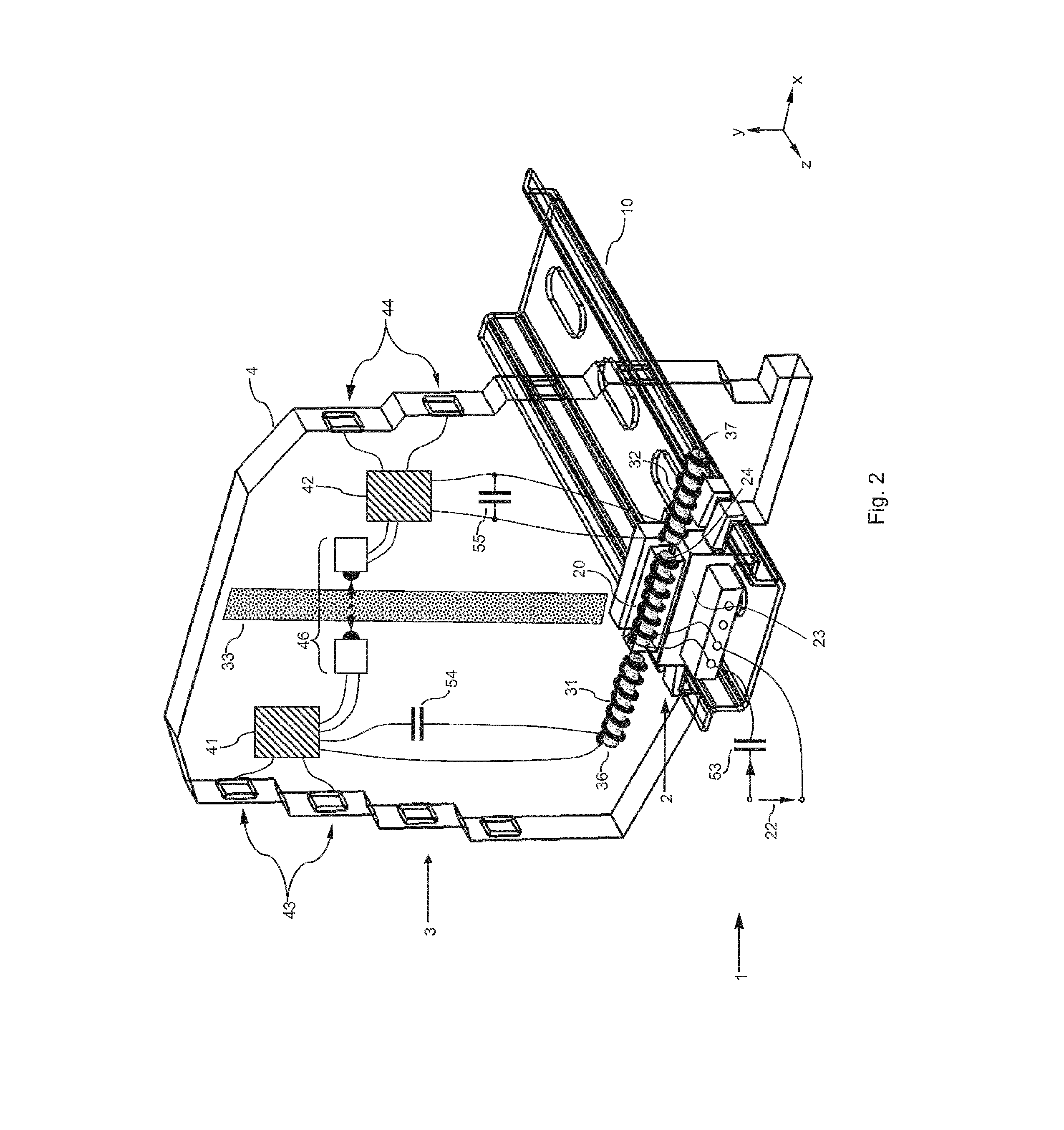Inductive energy supply unit
- Summary
- Abstract
- Description
- Claims
- Application Information
AI Technical Summary
Benefits of technology
Problems solved by technology
Method used
Image
Examples
Embodiment Construction
[0019]On a support rail 10 of an elongated module holding device 1, a transmitting coil 20 is secured which is supplied via an alternating input voltage 22 and thus acts as energy supply part 2. At a certain distance from the transmitting coil 20, a circuit board 30 is held by means of a housing 4 (FIG. 2) which is supported on the rail 10. Two spiral-shaped flat receiving coils 31, 32 which are separated from one another by an insulating area of separation 33 are fitted as conductor paths on the circuit board 30. The first receiving coil 31 is connected to a first electronics 41 and the second receiving coil 32 is connected to a second electronics 42. The components 31, 41, 54 form a first energy receiving part 34, and the components 32, 42, 55 form a second energy receiving part 35 of an electronic module 3.
[0020]The first electronics 41 can represent a signal or data input electronics and the second electronics 42 can be a signal or data output electronics of the electronic modul...
PUM
 Login to View More
Login to View More Abstract
Description
Claims
Application Information
 Login to View More
Login to View More - R&D
- Intellectual Property
- Life Sciences
- Materials
- Tech Scout
- Unparalleled Data Quality
- Higher Quality Content
- 60% Fewer Hallucinations
Browse by: Latest US Patents, China's latest patents, Technical Efficacy Thesaurus, Application Domain, Technology Topic, Popular Technical Reports.
© 2025 PatSnap. All rights reserved.Legal|Privacy policy|Modern Slavery Act Transparency Statement|Sitemap|About US| Contact US: help@patsnap.com



